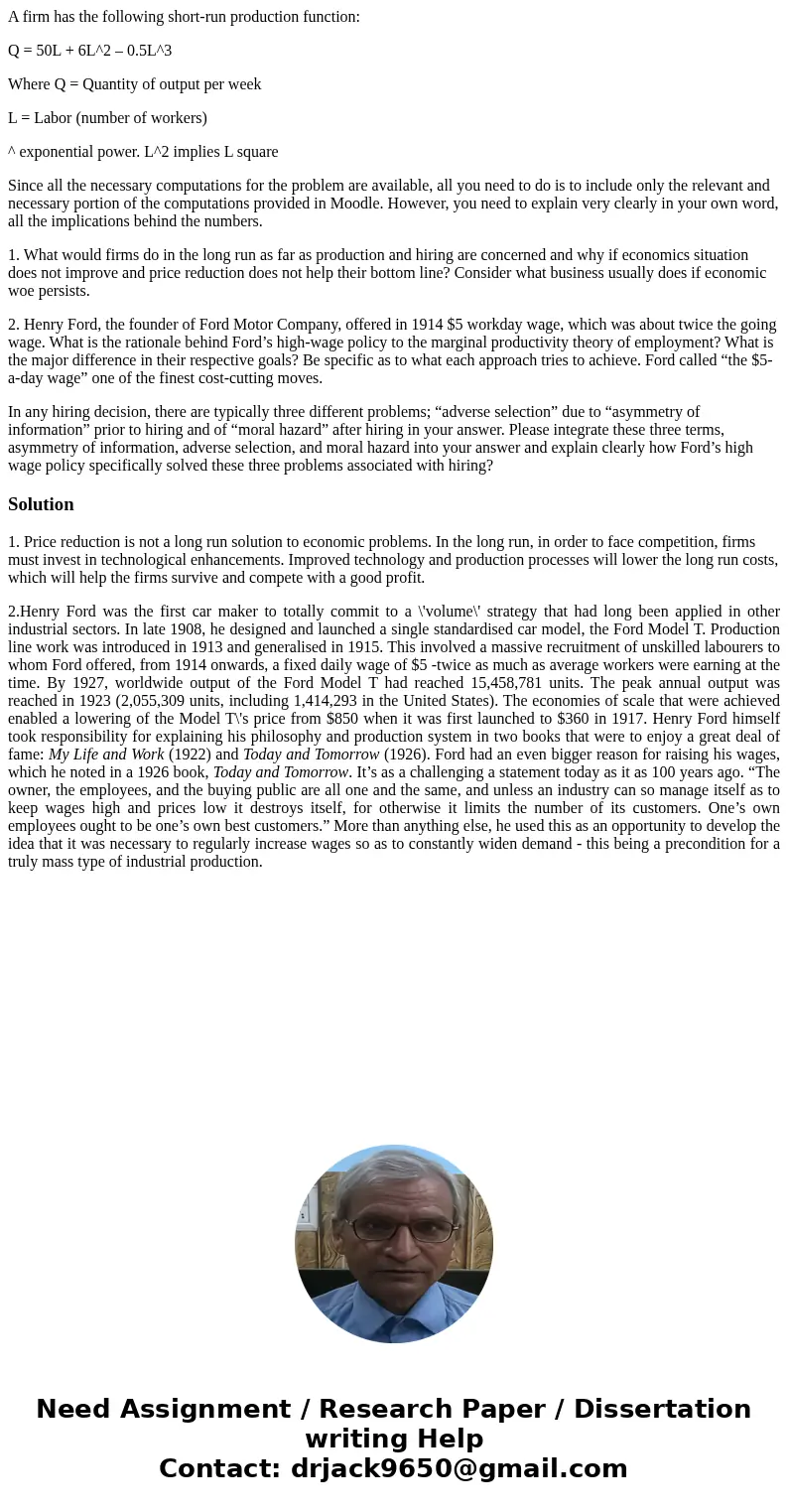A firm has the following shortrun production function Q 50L
A firm has the following short-run production function:
Q = 50L + 6L^2 – 0.5L^3
Where Q = Quantity of output per week
L = Labor (number of workers)
^ exponential power. L^2 implies L square
Since all the necessary computations for the problem are available, all you need to do is to include only the relevant and necessary portion of the computations provided in Moodle. However, you need to explain very clearly in your own word, all the implications behind the numbers.
1. What would firms do in the long run as far as production and hiring are concerned and why if economics situation does not improve and price reduction does not help their bottom line? Consider what business usually does if economic woe persists.
2. Henry Ford, the founder of Ford Motor Company, offered in 1914 $5 workday wage, which was about twice the going wage. What is the rationale behind Ford’s high-wage policy to the marginal productivity theory of employment? What is the major difference in their respective goals? Be specific as to what each approach tries to achieve. Ford called “the $5-a-day wage” one of the finest cost-cutting moves.
In any hiring decision, there are typically three different problems; “adverse selection” due to “asymmetry of information” prior to hiring and of “moral hazard” after hiring in your answer. Please integrate these three terms, asymmetry of information, adverse selection, and moral hazard into your answer and explain clearly how Ford’s high wage policy specifically solved these three problems associated with hiring?
Solution
1. Price reduction is not a long run solution to economic problems. In the long run, in order to face competition, firms must invest in technological enhancements. Improved technology and production processes will lower the long run costs, which will help the firms survive and compete with a good profit.
2.Henry Ford was the first car maker to totally commit to a \'volume\' strategy that had long been applied in other industrial sectors. In late 1908, he designed and launched a single standardised car model, the Ford Model T. Production line work was introduced in 1913 and generalised in 1915. This involved a massive recruitment of unskilled labourers to whom Ford offered, from 1914 onwards, a fixed daily wage of $5 -twice as much as average workers were earning at the time. By 1927, worldwide output of the Ford Model T had reached 15,458,781 units. The peak annual output was reached in 1923 (2,055,309 units, including 1,414,293 in the United States). The economies of scale that were achieved enabled a lowering of the Model T\'s price from $850 when it was first launched to $360 in 1917. Henry Ford himself took responsibility for explaining his philosophy and production system in two books that were to enjoy a great deal of fame: My Life and Work (1922) and Today and Tomorrow (1926). Ford had an even bigger reason for raising his wages, which he noted in a 1926 book, Today and Tomorrow. It’s as a challenging a statement today as it as 100 years ago. “The owner, the employees, and the buying public are all one and the same, and unless an industry can so manage itself as to keep wages high and prices low it destroys itself, for otherwise it limits the number of its customers. One’s own employees ought to be one’s own best customers.” More than anything else, he used this as an opportunity to develop the idea that it was necessary to regularly increase wages so as to constantly widen demand - this being a precondition for a truly mass type of industrial production.

 Homework Sourse
Homework Sourse